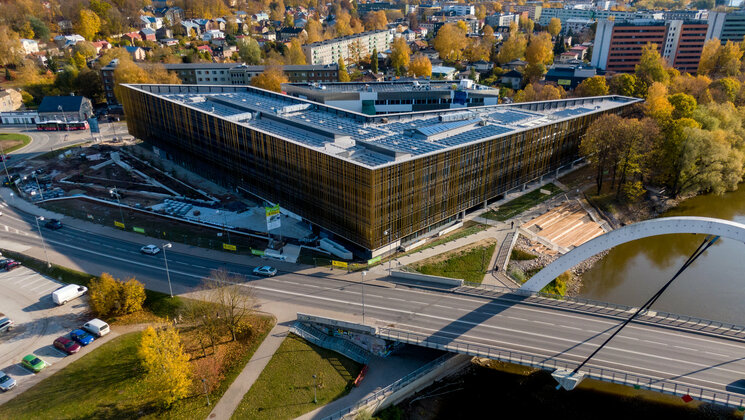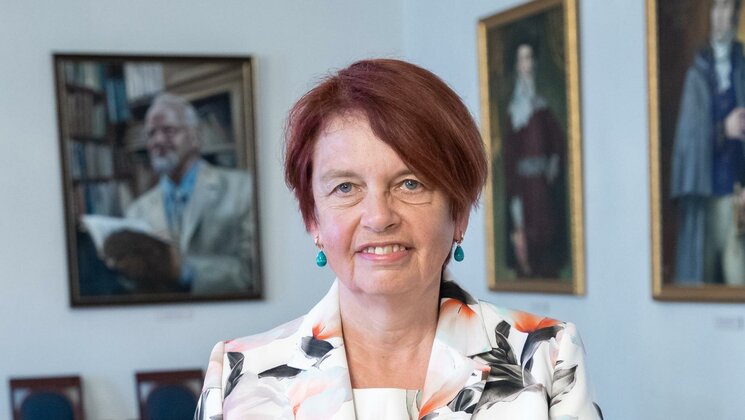University of Tartu ranks among the world’s top in materials science
According to the recently updated Web of Science citations database, the University of Tartu now also ranks in the one percent of the world’s most highly cited research institutions in the field of materials science. This is the thirteenth field of research in which the University of Tartu belongs among the top institutions.
Materials science is a rapidly developing field of research at the intersection of modern physics, chemistry and engineering, with the operational goal of developing new materials for different fields, such as photonics, electronics, energy and transport.
Kalmer Lauk, Analyst of Research and Development of the University of Tartu Grant Office, said that the University of Tartu’s success in materials science cannot be linked to just one researcher or one institute only. “Over the last ten years, a number of achievements have been made at the Institute of Physics, Institute of Chemistry and Institute of Technology, which have drawn a lively response from the scientific community and reached the top of the world in terms of citation numbers. Respected scientists like Professors Mikhail Brik and Ülo Langel and Associate Professor Kaido Tammeveski are just a few of the researchers whose work in the field of materials science has gained attention,” Lauk said.
University of Tartu scientists help to create, for example, innovative energy conversion and storage technologies to facilitate the wider use of renewable energy and electric transport. Just as important is the development of new efficient LED phosphors that help save energy and provide human-friendly lighting.
Director of the Institute of Chemistry Enn Lust expressed his satisfaction that reports of successful research studies on energy materials and low-capacity equipment have also reached companies operating in Estonia (for example, Auve Tech OÜ) and local governments. The materials scientists and electrochemists of the University of Tartu together with the local governments of the city of Keila, the city of Tartu and Ida-Viru County participate in introducing large-scale hydrogen energy projects.
Leap in quality
Over ten years, the University of Tartu has made great progress both in the general ranking of influential fields of research as well as in the number of scientists ranking at the top in their field. In 2011, just a decade ago, according to the Essential Science Indicators (ESI)* database, the University of Tartu was ranked among the highly cited research institutions only in six fields; currently in thirteen fields already. Also, the number of highly cited researchers has significantly grown: while in 2011, fifteen University of Tartu researchers were ranked among the top one percent of the highly cited researchers, the respective number in March this year was 72**. Over the last year alone, three faculties of the University of Tartu each managed to invite and recruit at least one scientist who is named among the top 1% of most-cited researchers in ESI fields.
Director of the Institute of Physics Toomas Plank believes that the success relies on the smart decisions of the university and the scientists. “With the help of the EU funds we have built an excellent research infrastructure, which is a highly important part of the working environment for every researcher, from doctoral students to top-level world-class scientists,” he said.
Plank said that if competitive conditions for research are provided, these are used both by our talented young researchers and brilliant international students, as well as by outstanding researchers from Estonia or other countries who supervise them. “Both in fundamental research and in technological development, the key to the success is first of all the people and their ambitious ideas. But to realise the exceptional ideas, one needs to have means – equipment and supporting technological structure. These work well at the University of Tartu,” Plank noted.
Also Director of the Institute of Technology Reet Kurg said that being ranked among the top institutions of the world definitely shows the high level of physical sciences at the University of Tartu, the foundation to which has been laid by our researchers with their long, dedicated work. “I emphasise the need to continue fundamental research in Estonia, because only this gives us new discoveries that can be applied to develop new innovative products,” Kurg said.
She said that research groups of the Institute of Technology and the Institute of Physics work in close collaboration with the European Council for Nuclear Research (CERN), helping to create new materials for particle accelerators and detectors. These technological solutions are used not only in CERN’s fundamental physics research, but also in space technology and modern medical technology, such as cancer treatment. Great opportunities open up in the field of hydrogen storage and transport, and in the innovative development projects in renewable energy technologies. Participation in the European Spallation Source (ESS) offers valuable international collaboration for the Institute of Chemistry.
Enn Lust is convinced that research in the field of materials science is becoming more and more important because the transition to hydrogen and renewable energy, which is taking place in the course of Europe’s green transition, presumes the creation of new durable materials with unique properties and their testing in energy equipment.
The current data of the University of Tartu’s most highly cited researchers and fields of research is available on the University of Tartu website. The time series of the data is available on the university’s statistics dashboard.
* ESI is an analysis tool that identifies the most cited scientific publications in the Web of Science Core Collection. The ESI analysis covers more than 11,000 journals published worldwide, ranking the authors, institutions, countries and journals of 22 fields by publication and citation indicators. Due to the methodology of the database, it does not consider the humanities, unfortunately. The data are based on a ten-year period and the number of publications and citations is updated every two months.
** In the statistics dashboard analysis, employees’ ID numbers are taken as a basis. If an employee does not hold an Estonian personal ID number (international and visiting research staff), the dashboard does not link their data with the university and their data are unfortunately not included in the analysis.
Further information:
Reet Kurg, Director of the Institute of Technology, +372 5341 9189, reet.kurg@ut.ee
Enn Lust, Director of the Institute of Chemistry, +372 511 2030, enn.lust@ut.ee
Toomas Plank, Director of the Institute of Physics, +372 501 6831, toomas.plank@ut.ee






